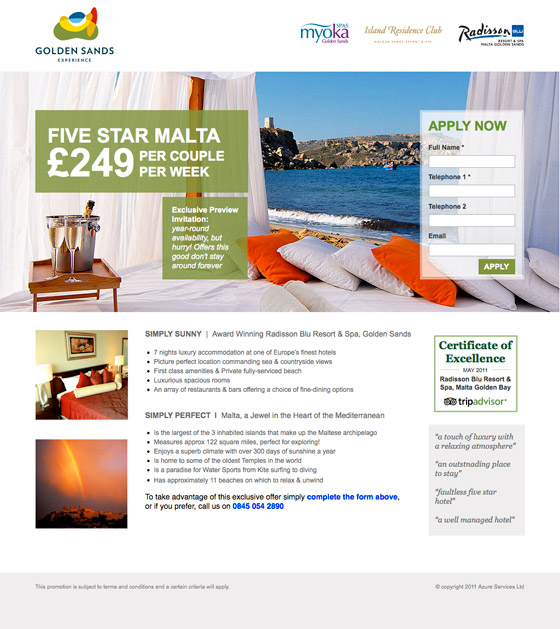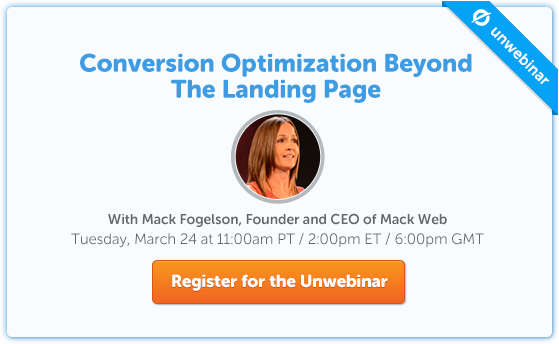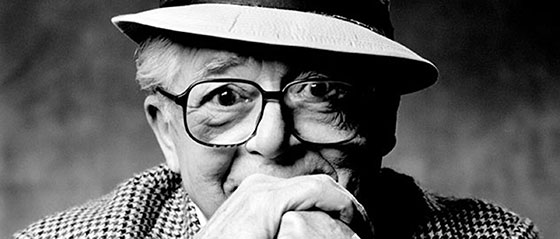
On the wall next to my desk I’ve pasted some tips on how to write well from three of my heroes: Ernest Hemingway, George Orwell – and Hollywood legend Billy Wilder. I write every single day, whether I feel like it or not. That’s how I get better.
Sometimes it can be a real grind to get the words out — it’s part of the gig. But I always have these simple rules to follow to help me get back on track.
Billy Wilder wrote 79 screenplays for movies like Casino Royale, Ocean’s 11 (the original versions), The Apartment and Some Like It Hot. In that time, he learned a thing or two about writing and how to hold an audience’s attention.
What is amazing to me about Billy Wilder’s rules for writing is how well they translate to marketing.
At the end of the day, whether you’re writing a screenplay or copy for a landing page, you’re writing for an audience. And if that audience isn’t interested, you’ll either end up with no one at your movie, or no prospects converting into customers.
Turns out Billy’s 10 writing rules also make for a great guide to landing page optimization. Let’s take a look at them and see what we can learn about landing pages from one of Hollywood’s most prolific writer/directors.
1. “The audience is fickle”
Audiences today are as fickle as they were in Billy’s time – whether they’re at the movies or on the internet. Nearly half of internet users will abandon a page that doesn’t load within three seconds.
One article from the National Center for Biotechnology Information suggests that the average American attention span in 2013 clocked in at about eight seconds. Compare this to that of the average goldfish with an attention span of nine seconds.
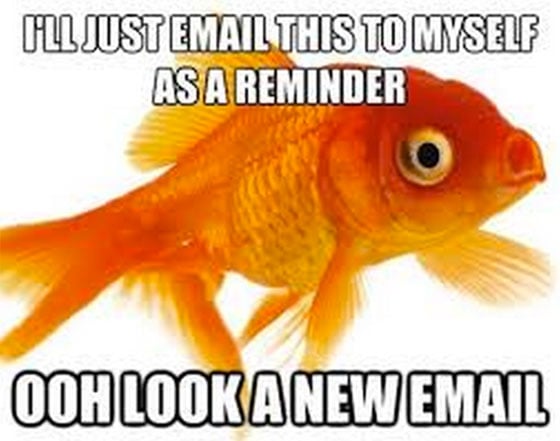
But it’s not just about being fickle – audiences are so bombarded with choices that they can hardly manage to concentrate on one thing for the same amount of time as a goldfish.
As marketers, we need to remember this. If your landing page isn’t delivering the goods immediately, you might as well print out a copy, cut it up into tiny pieces, and feed it to your goldfish.
At least the fish will be interested for a little while longer.
2. “Grab ‘em by the throat and never let ‘em go”
For one audience, Some Like It Hot may be the most engaging, edge-of-your-seat thriller ever filmed. Others may find it to be the most boring, slow, meandering mess of a movie they’ve ever seen.
All audiences are different and it’s up to marketers to discover how to hold their specific audience’s attention. The great part of working in our field is that we have the ability to analyze data that can give us clues as to what resonates with our prospects.
Have a look at how this landing page by Golden Sands Resorts uses evocative imagery to grab their visitor’s attention:
They grab your attention by placing you in an amazing room with an ocean view, and give you all the information you need to convince you to stay there. And you don’t get to just book the room — you have to apply, which creates a sense of exclusivity.
By using attention-driven design techniques, (using whitespace to allow certain aspects of your landing page to stand out, using directional cues to point at a CTA, using encapsulation to surround a landing page element, etc) you can grab your visitors’ attention, get them to see your unique value proposition, and follow through to the call to action.
3. “Develop a clear line of action for your leading character”
Wilder was a master of the mystery genre. The film Double Indemnity is filled with more tension than a high-wire line. There are choices made in this movie that may make you want to scream at the screen, but all of those choices lead to the conclusion, where all loose ends are tied up and all questions are answered.
No one likes to be filled with anxiety in the real world, but that feeling of anxiousness is a big part of what keeps people going back to movies. The choices the characters make on screen sometimes make us want to yell at the screen, and that’s how the writers make it fun for us.
This scene sums up this idea perfectly:
It seems obvious that Stanwyck is going to finish Fred MacMurray’s character off, but the result ends up being much different.
It’s a great movie scene, but we want to avoid this kind of tension on our landing pages at all costs by giving prospects a clear line of action to follow. Only one possible action. Only one goal.
Giving landing page visitors too many choices on a landing page creates decision fatigue. With too much choice, visitors will often choose nothing at all.
As the screenwriter of the landing page, your job is to give the visitor just one choice to make. Anxiety is what makes movies interesting – it’s also what makes landing pages fail.
4. “Know where you’re going”
If Bud Baxter in The Apartment had not been trying to climb up the corporate ladder he would have nothing to pursue and the movie would be as unmemorable as Breakin’ 2: Electric Boogaloo.
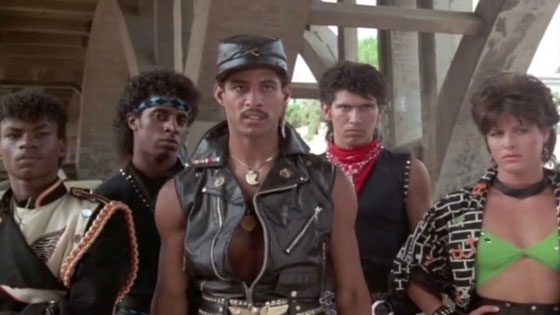
A landing page supports a campaign. But if you’re not clear on your campaign goals, your landing page will reflect that and leave prospects confused – just like watching a movie with no plot.
Start with a clearly laid-out campaign plan.
From there, you’ll have all the information you need to guide prospects toward the next step: the conversion.
5. “The more subtle and elegant you are in hiding your plot points, the better you are as a writer”
In one of the great murder mysteries of all time, Witness for the Prosecution, Wilder takes the audience through more twists and turns than a coastal road in a James Bond movie.
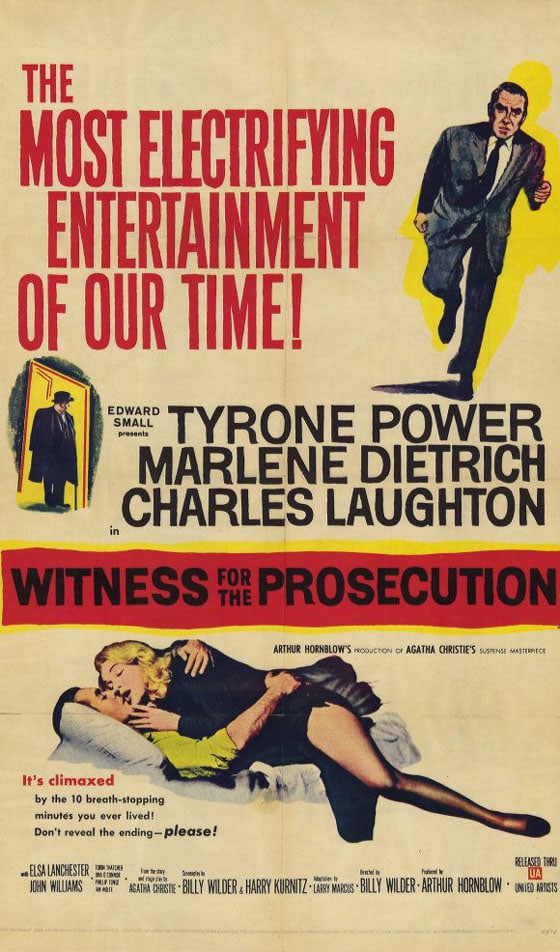
The genius of this film is that the audience never quite knows what’s about to happen. The screenplay leads people to believe one thing, and then reveals another to be true. It’s done in an elegantly sophisticated way – not with brute force.
The less aggressive you are on a landing page, the better you’ll be at converting your readers.
This isn’t to say that you should pull the ole bait ‘n switch like Wilder does — it simply means that subtlety goes a long way toward making your visitors comfortable enough to convert.
Here’s a great example of how not to be subtle:
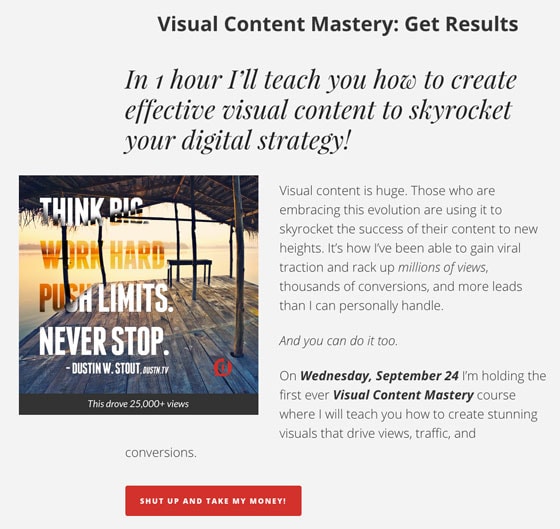
“Shut up and take my money” is a fun thing to say in an article’s comment section or on a Reddit thread, but in terms of subtlety, this is the landing page equivalent of an Adam Sandler movie.
Don’t make people think about the fact that they’re about to part with their money – make them think about how great their lives are going to be once they purchase your product or service.
6. “If you have a problem with the third act, the real problem is in the first act”
What Wilder means in this rule is that if the ending is not achieving the results you’re after, then you need to look at the problem from the beginning.
Are the characters not lining up together the way they were intended to? Is the protagonist not becoming the hero he was meant to be? Is the story just not interesting at this point?
If so, you must go back to the beginning to help them get there by offering them a different launching point.
The third act of any landing page is the action taken by the visitor to that page – the conversion. If you’re not getting conversions, take a step back and look at your proverbial first act: your headline.
Test your headlines to ensure you’re getting the attention of your audience right from the very beginning. Make sure you give them a reason to stay and to find out what’s going to happen in the end.
7. “Let the audience add up two plus two. They’ll love you forever”
With any film, the goal is to give the audience the information they need to put the story together for themselves – to give them enough to understand where the journey may take them.
On a landing page, this is done by using a hero shot to help the audience picture your product and imagine themselves using it.
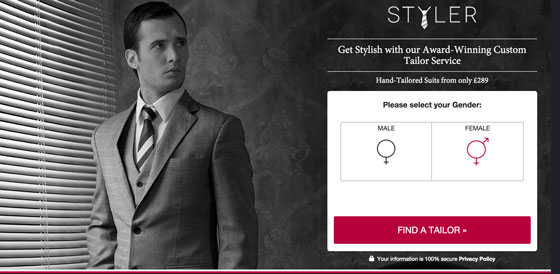
Shots of happy, satisfied customers using the product convey a sense of gratification that an audience can relate to. Or, like the image of the dapper fellow above, it gets the audience thinking about how amazing they’re going to look when they have their very own tailored three-piece suit.
Using these aspirational elements together gives your landing page audience a kind of sense of completion – you’ve given them just enough information to start imagining their future with your solution, and they’re beginning to fall just a little bit in love.
8. “In doing voice-overs, be careful not to describe what the audience already sees. Add to what they’re seeing”
Billy Wilder made very little use of voice-overs in his movies. Brian Cox’s character in Adaptation (written by Charlie Kaufman) is dead-set against them.
The closest thing to a voice-over that we could use on a landing page is video. If done right, videos can work really well to help nudge visitors toward conversion.
Like voice-overs, your videos should never repeat the information that you’ve already presented on your page. They should complement the rest of your page and offer extra information that certain types of buyers may need in order to convert.
And whatever you do, remember that your landing page should still be able to stand on its own without the video. A significant percentage of your landing page visitors will never watch your video at all.
9. “The event that occurs at the second act curtain triggers the end of the movie”
The second act of a movie is often one of the most difficult to write. It has to set the stage for the grand finale and can easily feel like it drags on.
On your landing pages, the second act is like the seemingly mundane (but very necessary) elements that propel readers through to your call to action.
These elements are things like your trust seals and testimonials:
- Trust seals are those logos that you see on sites that give your visitors a reason to feel that their information is safe when they submit it to your site.
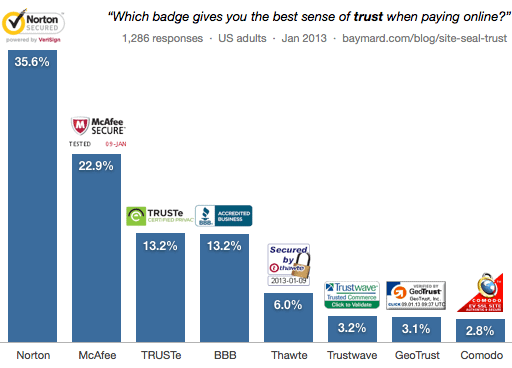
- Testimonials are highly condensed success stories in which your customers talk about their experience with your brand.
These fall under the category of social proof, which also includes things like a ribbon of company logos on your landing page:
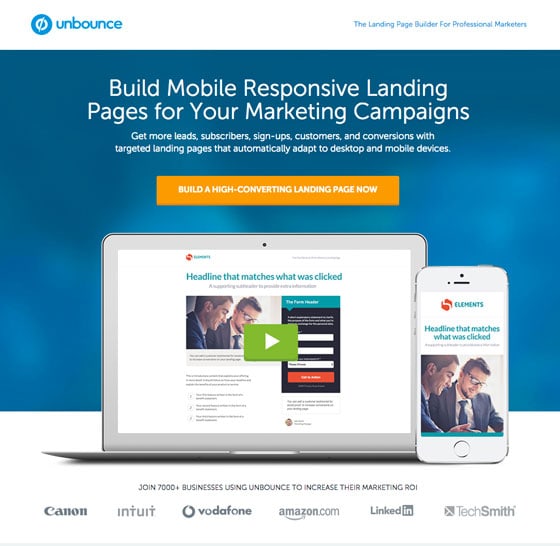
They may not seem like much (and you may be sick of reading about them), but altogether, they help get you to the third act where you can get those well-earned clicks.
10. “The third act must build, build, build in tempo and action until the last event, and then – that’s it. Don’t hang around”
There’s a story that Elijah Wood has told about when Jack Nicholson asked him “What happened?” with regards to The Lord of the Rings. “You know, that movie,” Jack said, “It just had so many endings… it just wouldn’t end!”
With most Billy Wilder movies, a rather exacting formula is used and his movies generally hover around the 90-minute mark – depending on how long it takes to tell the story that needs to be told.
Marketers often ask about the perfect length of a landing page, and Sherice Jacobs sums up the answer succinctly in this article:
The ideal length of your landing page will depend largely on the goal of the page.
How long does it take you to tell your brand’s story?
It takes exactly as long as it takes to get your audience to convert, and no longer. The way to find out is to test your pages and see what your audience prefers.
Just like focus groups at film screenings can advise producers about audience reaction, every landing page needs to undergo rigorous testing to ensure you are reaching your audience in the most efficient means possible.
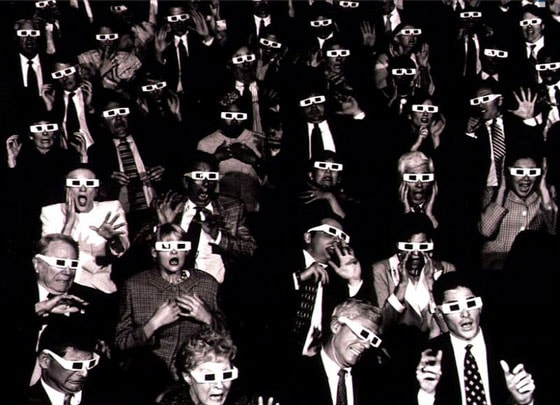
Give them just enough, hit them with the call to action, and wait for the virtual ovation to begin.
Not all stories have a Hollywood ending… but they could
As it turns out, Billy Wilder has tons of landing page opitmization advice to offer. He once said:
Trust your own instinct. Your mistakes might as well be your own, instead of someone else’s.
This is something that all marketers need to remember. Much of what we do depends on failure, and knowing that it gets us closer to the happy ending we’re looking for.
It’s by testing different elements of a landing page and learning what does and does not work that we become closer to writing our own Hollywood endings.
Where have you found inspiration that has helped you to build better landing pages? Tell us your story in the comments below!
![]()
